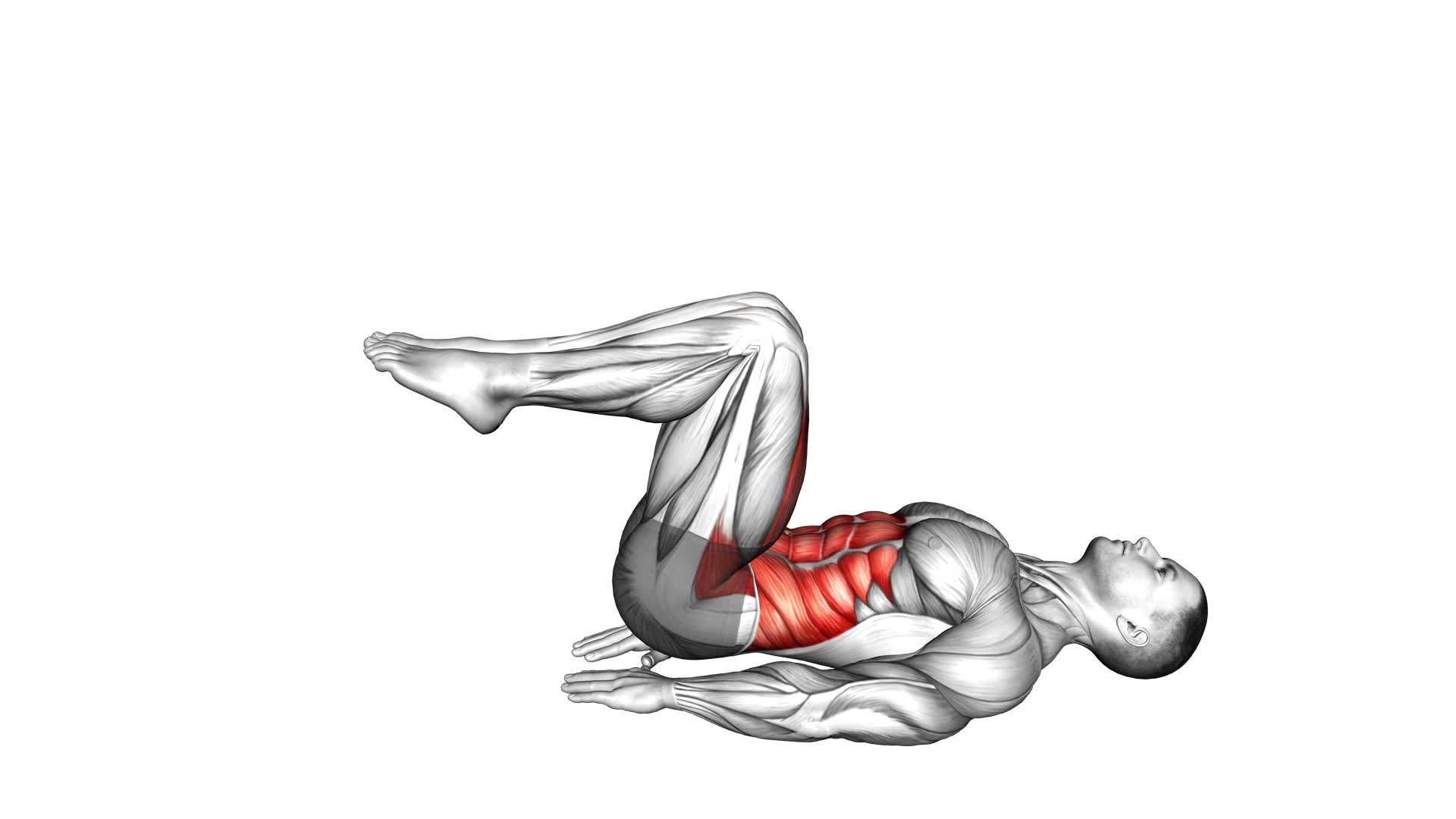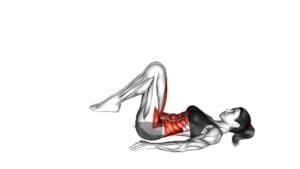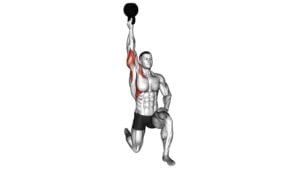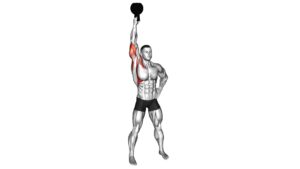Bottoms-up (male) – Video Exercise Guide & Tips

Get ready to take your lower body workouts to the next level with 'Bottoms-up (male) – Video Exercise Guide & Tips {013812}'!
Watch This Exercise Video
This comprehensive guide will show you how to activate your muscles, develop strength and power, and achieve optimal results.
With a variety of squat variations, lunges, deadlifts, plyometric exercises, and stretching techniques, you'll sculpt your glutes, quads, hamstrings, and more.
Get ready to sweat, push yourself, and see amazing progress with this video exercise guide!
Key Takeaways
- Warm up with dynamic stretching exercises to increase blood flow and flexibility in the lower body.
- Incorporate lunges into your warm-up routine to target the quadriceps, hamstrings, and glutes and improve balance and core strength.
- Use squat variations to target both the glutes and quads, such as wide-stance squats for glute emphasis and narrow-stance squats for quad emphasis.
- Include deadlifts in your lower body strength training to engage multiple muscle groups, improve core stability, and increase grip strength.
Warm-Up Exercises for Lower Body Activation
To effectively warm up your lower body before a workout, begin by incorporating dynamic stretching exercises.
These exercises are crucial for activating your leg muscles and preparing them for the upcoming workout. Dynamic stretching involves moving your muscles through a full range of motion, which helps to increase blood flow and flexibility.
Start with exercises like walking lunges, which target your quadriceps, hamstrings, and glutes. As you step forward into each lunge, focus on maintaining good form and feeling the stretch in your muscles.
Another great exercise to include in your lower body warm-up is high knees. This exercise not only activates your leg muscles but also increases your heart rate, getting you ready for a more intense workout. Stand tall and alternate lifting your knees as high as possible while keeping a quick, rhythmic pace. Remember to engage your core and keep your posture upright throughout the exercise.
Squat Variations for Glute and Quad Development
For glute and quad development, enhance your lower body strength with various squat variations. Squats are a fantastic compound exercise that targets multiple muscle groups, including the glutes and quads. By incorporating squat variations into your workout routine, you can take your lower body strength to the next level.
One important aspect to consider when performing squats is glute activation. To maximize glute engagement, focus on driving through your heels and squeezing your glutes at the top of the movement. This will help ensure that your glutes are being properly activated during the exercise.
Additionally, it's important to vary your squat variations to target both the glutes and quads. While traditional squats primarily emphasize the quads, you can modify your stance and foot placement to shift the emphasis to the glutes. Wide-stance squats and sumo squats are great options for targeting the glutes. On the other hand, narrow-stance squats and front squats place more emphasis on the quads.
Remember, squats are a versatile exercise that can be customized to suit your specific goals. By incorporating different squat variations into your routine, you can effectively develop both your glutes and quads, leading to a stronger and more sculpted lower body.
Keep challenging yourself and enjoy the benefits of these quad-dominant exercises.
Lunges for Sculpting the Hamstrings and Glutes
Ready to take your lower body workout to the next level? Lunges are the perfect exercise to sculpt your hamstrings and glutes.
By maintaining proper form and incorporating variations, you can maximize the benefits of lunges and achieve the results you desire.
Get ready to feel the burn and see the results with lunges!
Proper Lunge Form
When performing lunges to sculpt the hamstrings and glutes, it's important to maintain proper form. Here are some tips to help you achieve the best results:
- Common Lunge Mistakes
- Avoid leaning too far forward, as this can strain your knees.
- Keep your front knee directly above your ankle to avoid injury.
- Lunge Variations for Different Muscle Targeting
- Reverse lunges: Focuses more on the glutes and hamstrings.
- Walking lunges: Engages the core and improves balance.
By following these tips, you can ensure that you're maximizing the effectiveness of your lunges and minimizing the risk of injury.
Now, let's delve into the benefits of lunges and why they should be a part of your fitness routine.
Benefits of Lunges
To maximize the effectiveness of your lunges and sculpt your hamstrings and glutes, incorporating lunges into your fitness routine offers numerous benefits.
Lunges aren't only great for targeting these specific muscle groups, but they also provide additional advantages for your overall fitness.
One of the key benefits of lunges is improved balance. By engaging your core and lower body muscles, lunges help to strengthen your stabilizing muscles, making you more stable and balanced during everyday activities.
Additionally, lunges are excellent for core strength. As you perform lunges, your abdominal muscles are engaged to maintain proper form and stability. This not only helps to strengthen your core, but it also enhances your overall posture and stability.
Now that you know the benefits of lunges, let's explore variations for lunges.
Variations for Lunges?
Incorporate variations of lunges into your fitness routine to sculpt your hamstrings and glutes even more effectively, targeting those specific muscle groups while also reaping the benefits of improved balance and core strength.
Here are some lunge variations for balance and stability, as well as modifications for beginners and those with knee issues:
- Forward Lunges:
- Step forward with one foot, keeping your knee directly above your ankle.
- Push through your front heel to return to the starting position.
- Reverse Lunges:
- Step back with one foot, lowering your back knee towards the ground.
- Push through your front heel to return to the starting position.
These variations can help challenge your muscles in different ways and provide a safer option for individuals with knee issues.
Remember to maintain proper form and start with lighter weights or bodyweight if you're a beginner.
Deadlifts for Overall Lower Body Strength
Build overall lower body strength with deadlifts.
Deadlifts are a powerful exercise that target multiple muscle groups, making them an excellent choice for developing strength in your lower body. There are various deadlift variations you can incorporate into your workout routine to keep things challenging and prevent plateaus. Some popular variations include the conventional deadlift, sumo deadlift, and Romanian deadlift. Each variation targets slightly different muscles, allowing you to work your entire lower body effectively.
The benefits of deadlifts extend beyond just building lower body strength. Deadlifts also engage your core, helping to improve stability and posture. Additionally, they're a compound exercise, meaning they work multiple joints and muscle groups simultaneously, resulting in greater overall strength gains. Deadlifts can also increase your grip strength, which can be beneficial for other exercises like pull-ups and rows.
To perform deadlifts correctly, start with your feet hip-width apart, grip the bar with your hands shoulder-width apart, and keep your back straight. Engage your core and lift the bar by driving through your heels and extending your hips. Lower the bar back down in a controlled manner, keeping your back straight throughout the movement.
Incorporating deadlifts into your workout routine can help you build overall lower body strength, improve core stability, and increase grip strength. Remember to start with proper form and gradually increase the weight as you become stronger. Challenge yourself with different variations to keep your workouts exciting and to continually progress towards your fitness goals.
Plyometric Exercises for Explosive Power
Boost your explosive power with plyometric exercises that will take your workouts to the next level. Plyometric training involves explosive movements that enhance muscular power and speed. Incorporating these exercises into your routine can improve your athletic performance and help you achieve your fitness goals faster.
Here are two sub-lists of plyometric exercises to add to your training regimen:
- Lower Body Plyometric Exercises:
- Box Jumps: Start by standing in front of a sturdy box or elevated platform. Jump onto the box, fully extending your hips and knees, and land softly on the balls of your feet.
- Squat Jumps: Begin in a squat position with your feet shoulder-width apart. Explosively jump upwards, reaching for the ceiling, and land back into a squat position.
- Upper Body Plyometric Exercises:
- Clap Push-ups: Assume a push-up position, lower your body towards the ground, and explosively push yourself up, clapping your hands together before landing back in the starting position.
- Medicine Ball Throws: Stand with your feet shoulder-width apart, holding a medicine ball at chest level. Extend your arms forward and throw the ball as far as possible, using your entire body to generate power.
Incorporating plyometric exercises into your workouts will enhance your explosive power, allowing you to excel in sports, improve your overall strength, and achieve your fitness goals.
Stretching and Recovery Techniques for Optimal Results
To maximize your results and prevent injuries, it's crucial to prioritize stretching and recovery techniques in your fitness routine.
Incorporating dynamic stretching and foam rolling into your post-workout routine can significantly enhance your overall performance and help you achieve optimal results.
Dynamic stretching involves actively moving your muscles through a full range of motion. It not only improves flexibility but also increases blood flow to the muscles, preparing them for the demands of your workout. Performing dynamic stretches like leg swings, arm circles, and walking lunges can help loosen up tight muscles and increase joint mobility.
Foam rolling, on the other hand, is a self-myofascial release technique that uses a foam roller to apply pressure to specific areas of your body. This helps release muscle tension and promote muscle recovery. Foam rolling can be particularly beneficial for areas prone to tightness, such as the calves, hamstrings, and IT bands.
By incorporating both dynamic stretching and foam rolling into your routine, you can enhance your flexibility, reduce the risk of injury, and improve your overall athletic performance.
Remember to prioritize stretching and recovery techniques to ensure you're getting the most out of your workouts and achieving optimal results.
Frequently Asked Questions
How Many Sets and Reps Should I Do for Bottom-Up Exercises?
For bottom-up exercises, it's important to focus on proper form and technique. Start with a weight that challenges you but still allows for good form. Aim for 3-4 sets of 10-12 reps, making sure to maintain control throughout the movement.
Bottom-up exercises help improve core stability, grip strength, and overall body control. By incorporating them into your fitness routine, you'll enhance your strength, balance, and coordination.
Can I Perform Bottom-Up Exercises if I Have Knee or Lower Back Pain?
If you're experiencing knee or lower back pain, it's important to listen to your body. Instead of performing bottom-up exercises, there are alternative exercises that can be beneficial.
Focus on exercises that don't put excessive strain on your knees or lower back. Additionally, incorporating stretching and mobility exercises can help alleviate pain and improve flexibility.
Are There Any Modifications or Progressions for Beginners or Advanced Individuals?
When it comes to bottoms-up exercises, there are definitely modifications for beginners and progressions for advanced individuals.
If you're just starting out, you can start by using lighter weights or even just your body weight. As you get stronger and more comfortable, you can gradually increase the intensity by using heavier weights or adding variations to the exercise.
It's all about finding the right level of challenge for you and continuously pushing yourself to improve.
Should I Use Weights or Resistance Bands for Bottom-Up Exercises?
When it comes to bottom-up exercises, both weights and resistance bands can be effective. Using weights adds extra resistance, helping to build muscle strength and size.
On the other hand, resistance bands provide a different type of resistance, engaging stabilizer muscles and improving overall balance.
To get the most out of your workout, it's important to focus on proper form and technique. Start with lighter weights or bands and gradually increase the intensity as you become more comfortable and stronger.
How Often Should I Incorporate Bottom-Up Exercises Into My Workout Routine?
To maximize your workout routine, it's important to incorporate bottom-up exercises regularly. By adding these exercises into your routine, you'll not only increase muscle growth but also improve your overall strength and stability.
Aim to do bottom-up exercises at least 2-3 times a week. Don't forget to combine them with cardio to enhance your endurance and burn more calories.
Conclusion
Incorporating the bottoms-up video exercise guide and tips into your workout routine can help you achieve optimal results for your lower body.
By warming up with activation exercises, performing squat variations for glute and quad development, lunges for sculpting the hamstrings and glutes, deadlifts for overall lower body strength, and incorporating plyometric exercises for explosive power, you'll be on your way to a stronger and more sculpted lower body.
Finish off with stretching and recovery techniques to maximize your gains.
Get ready to unleash your full potential!

Author
Years ago, the spark of my life’s passion ignited in my mind the moment I stepped into the local gym for the first time. The inaugural bead of perspiration, the initial endeavor, the very first surge of endorphins, and a sense of pride that washed over me post-workout marked the beginning of my deep-seated interest in strength sports, fitness, and sports nutrition. This very curiosity blossomed rapidly into a profound fascination, propelling me to earn a Master’s degree in Physical Education from the Academy of Physical Education in Krakow, followed by a Sports Manager diploma from the Jagiellonian University. My journey of growth led me to gain more specialized qualifications, such as being a certified personal trainer with a focus on sports dietetics, a lifeguard, and an instructor for wellness and corrective gymnastics. Theoretical knowledge paired seamlessly with practical experience, reinforcing my belief that the transformation of individuals under my guidance was also a reflection of my personal growth. This belief holds true even today. Each day, I strive to push the boundaries and explore new realms. These realms gently elevate me to greater heights. The unique combination of passion for my field and the continuous quest for growth fuels my drive to break new ground.







